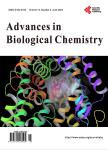Efficient Production of L-Theanine Using Immobilized Recombinant <i>Escherichia coli</i>Cells Expressing a Modified γ-Glutamyltranspeptidase Gene from <i>Pseudomonas nitroreducens</i>
Efficient Production of L-Theanine Using Immobilized Recombinant <i>Escherichia coli</i>Cells Expressing a Modified γ-Glutamyltranspeptidase Gene from <i>Pseudomonas nitroreducens</i>作者机构:Department of Biotechnology College of Life Sciences Ritsumeikan University Shiga Japan Graduate School of Technology Industrial and Social Sciences Tokushima University Tokushima Japan Department of Bioscience and Biotechnology Fukui Prefectural University Fukui Japan
出 版 物:《Advances in Biological Chemistry》 (生物化学进展(英文))
年 卷 期:2020年第10卷第6期
页 面:157-171页
学科分类:0202[经济学-应用经济学] 02[经济学] 020205[经济学-产业经济学]
主 题:L-Theanine γ-Glutamyltranspeptidase Pseudomonas nitroreducens Escherichia coli Immobilization
摘 要:L-Theanine (γ-glutamylethylamide) is a naturally occurring amino acid derivative known to have several beneficial physiological effects as a diet supplement, and to give an umami taste when used as a food additive. The compound is industrially produced by γ-glutamyltranspeptidase from Pseudomonas nitroreducens (PnGGT). Using recombinant PnGGT, we have shown previously that Trp385, Phe417, and Trp525 are key amino acid residues for recognition of acceptor substrates at the PnGGT active site. Here, we demonstrate that a recombinant W525D mutant of PnGGT produces L-theanine from ethylamine and L-glutamine more efficiently than wild-type PnGGT, attributable to an increased ratio of transfer activity to hydrolysis activity. An efficient production of L-theanine was achieved by immobilizing Escherichia coli cells expressing the W525D PnGGT mutant (E. coli-W525D) using 2% alginate as the supporting material. The highest L-theanine production using immobilized E. coli-W525D, representing a conversion rate of 90%, was achieved in optimal reaction conditions of pH 10, 40°C, and a substrate molar ratio of L-glutamine to ethylamine of 1:10. The immobilized E. co



